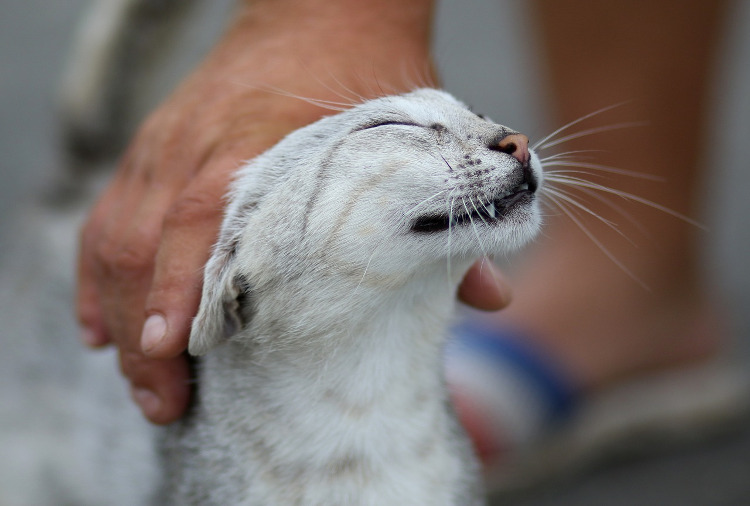![]()
Your cat’s eyes, when healthy, should look clear and bright. However, if you notice anything unusual about them, such as goopy discharge or discolouration, it may be a good idea to bring them to the vet. Learn more about the various causes of eye discharge in cats.
While extra tearing up from time to time may be normal in some cases, if it is chronic or recurring, you should definitely bring your cat to the vet! This excessive tearing could be an underlying symptom of the many causes we are going to discuss.
Indications There May be Something Wrong
You should definitely bring your cat to your family vet if your cat is showing these signs of discomfort:
- Squinting
- Excessive blinking
- Constantly pawing at their face
- Gooey or crusty buildup around the tear ducts
- Rubbing their face constantly against surfaces
Potential causes of eye discharge in cats include the following:
1. Feline Upper Respiratory Infections
There are several viruses that can cause cats’ eyes to tear up, such as the feline calicivirus (contagious respiratory disease), pneumonitis, or rhinotracheitis (both part of the family of feline herpesvirus, or FHV). Symptoms of each upper respiratory infection can range from mild to serious, and one of those symptoms may include sticky, pus-like eye discharge.
2. Corneal Disorders
The cornea is the dome-shaped surface that covers the front of the eye. It can become inflamed, injured, or ulcerated leading to cloudiness, excessive blinking, inflammation, and increased tear production.
3. Conjunctivitis
The conjunctiva is the pink membrane part of the eye. When it becomes inflamed, it can appear quite red and swollen and lead to goopy or watery eye discharge. A number of viruses and bacteria can cause these non-specific changes, making it all the more important for your vet to perform a thorough eye exam.
If these eye signs are accompanied by the typical symptoms of pet allergies, such as licking, biting, scratching, or over-grooming of the body, it may be time to consult with a veterinary dermatologist. Skin problems and allergies can definitely cause secondary eye problems.
4. Blepharitis
Blepharitis is inflammation of the eyelids. Typically this is seen as crusty eyelids with unhealthy skin and hair loss around eyes. It can be quite discomforting for cats and the problem may keep coming back after treatments. Luckily, it is an uncommon problem in cats. Eyelid inflammation can be related to skin infection, parasites, and allergies. Even though eye discharge may be seen, the eye involvement can be a secondary problem with skin of eyelids being the main affected area.
5. Blocked tear ducts
The facial anatomy of brachycephalic (flat-nosed) cats such as Himalayans and Persians may impair proper tear duct drainage. Hair around the eyes, debris, and foreign objects can also plug up the tear ducts causing excess tears to accumulate.
6. Uveitis
Inflammation of the internal structure of the eye due to trauma, cancer, immune problems, or infections can cause serious and often painful inflammation.
7. Other Eye Discharge Causes
Other potential causes worth mentioning include feline infectious peritonitis (FIP), allergies, a foreign object lodged in the eye, or third eyelid protrusions.
If you notice your cat has any issues with their eyes including discharge or discolouration, be sure to visit your vet and have them checked out. If specialized eye care through a veterinary eye specialist or allergy care through a veterinary dermatologist is needed, your vet will be able to assess further steps. Your cat will thank you with their demanding “pet me” look.
Creative Commons Attribution: Permission is granted to repost this article in its entirety with credit to VetDERM Clinic and a clickable link back to this page.

Dr. Andrea Lam, DVM, DACVD is a Board certified veterinary dermatologist. Dr. Lam loves learning and educating, and has trained several dermatology interns as well as dermatology residents. Her research interests include novel management strategies for the treatment of canine atopic dermatitis and applications for stem cell therapy.



 by
by